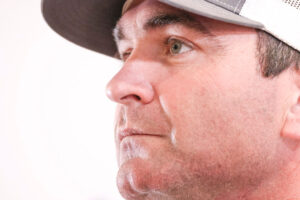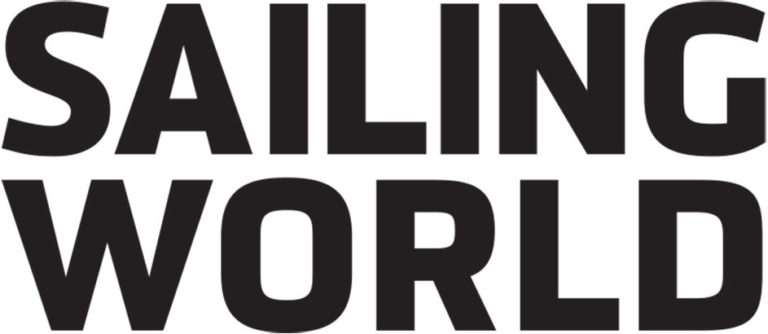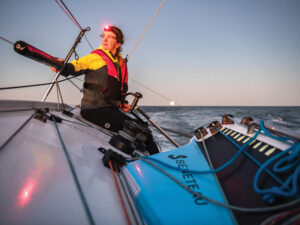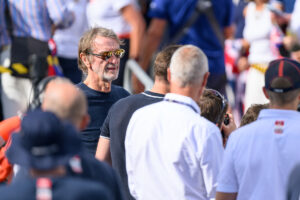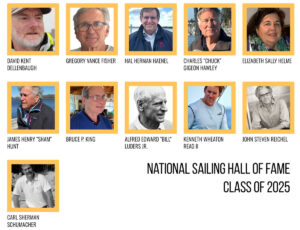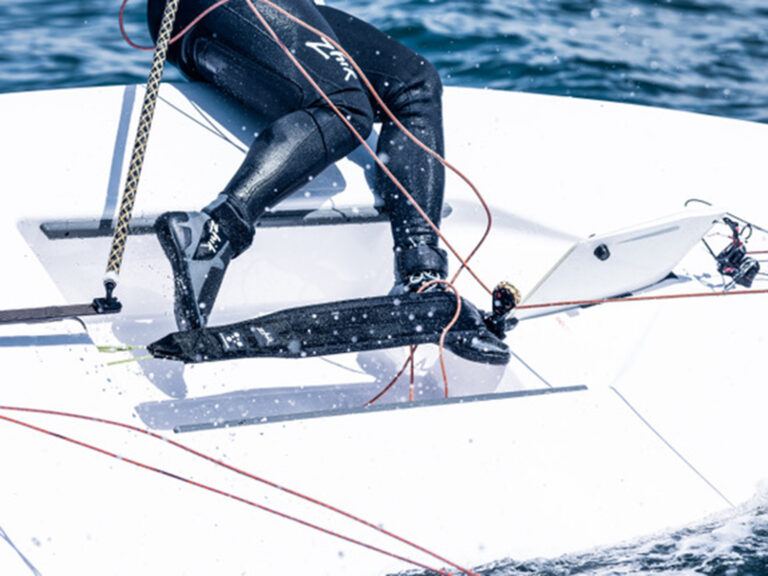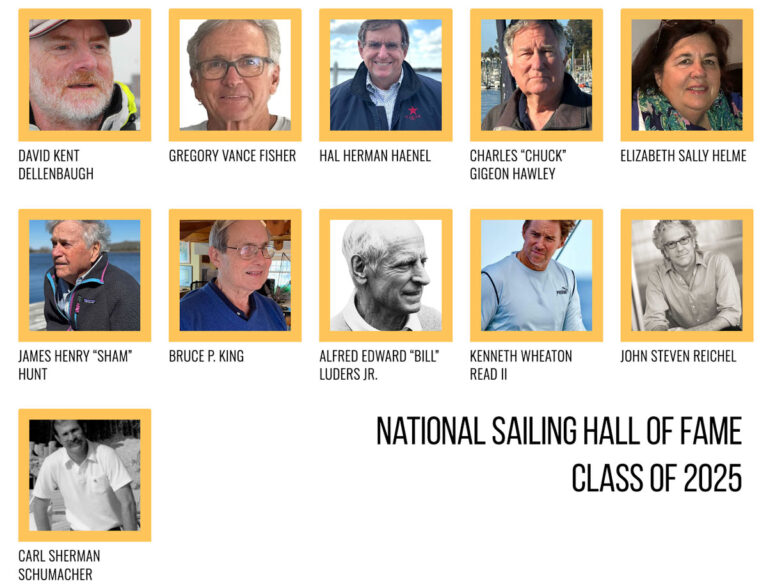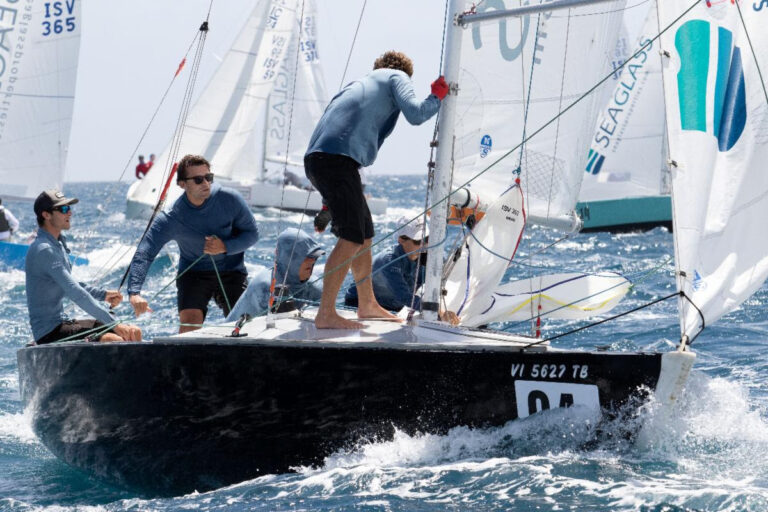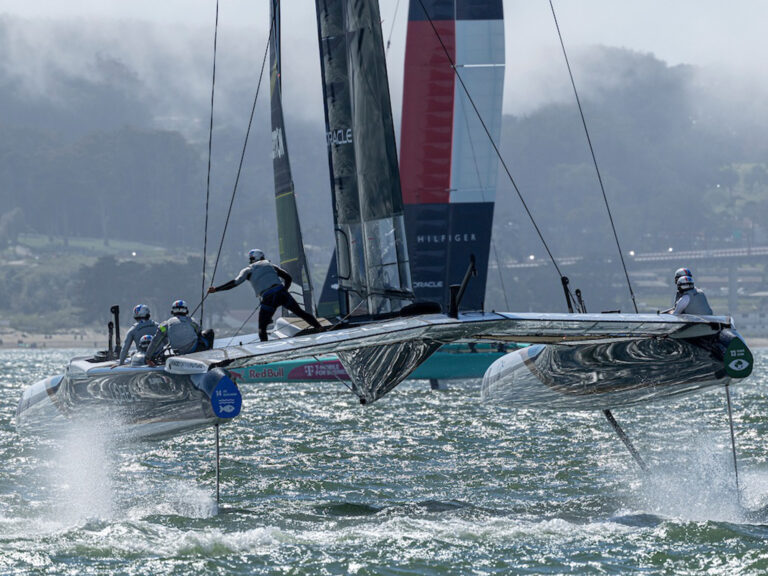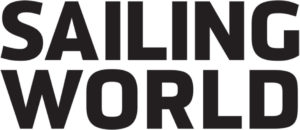When Team ABN AMRO, the Netherlands-based Volvo Ocean Race syndicate announced it would staff one of its two raceboats with eight “high potential” sailors last November, it got George Peet thinking about how bitchin’ it would be to tear across the Southern Ocean-experiencing for himself the kind of stuff he’d seen on an EF Language Whitbread DVD when he was 17. The announcement explained how the team would be picked from an elimination-style selection process. From online applicants, 80 sailors would be invited to try out in four regions (20 per region)-Brazil, Holland, the United States, and international (meaning everywhere else). Then, five from each of these groups would continue on to a two-week session at the team’s base in Portimao, Portugal. After the first week, two sailors from each region would be sent home, and at the end of the second, one more would get the flick. Once selected, the final eight would join skipper Sebastian Josse and three other core crewmen already selected to sail ABN’s training boat. Peet was convinced that, at 5’4″ and 150 pounds, he was way too small and out of his league for a Volvo team. But that didn’t stop the 25-year-old bowman from Harbor Springs, Mich., from filling in the application on the team’s website. “I was thinking, ‘there’s no way this is gonna work out for me, but I gotta take a chance,'” he said. Realizing the rare opportunity to fast track onto a Volvo team, nearly 1,800 others did the same, including Andrew Lewis, who at 23, was at a point in his sailing career where he was itching to make a move. He was working for his parents’ home-gym equipment supply company in Honolulu and putting in his time on the Laser Olympic campaign trail. He had earned a spot on the U.S Olympic Sailing Team in February, but put his Olympic ambitions aside. “It was something different to do,” he said. “I’d love to do an America’s Cup or something where I can sleep in a bed every night, but this was such an opportunity to put my foot in the door that I had to see what it was all about.” In Annapolis, Jan Majer, a 26-year-old Chesapeake Bay native, submitted his application and then returned to getting the IMS boat he was in charge of from one winter regatta to another. Frustrated with running an uncompetitive program, Majer had cast his application hoping the skills he’d acquired from a lifetime of living and working on boats would be enough to get him to the big league. In January, Peet, Lewis, Majer, and 15 others got their invitations to Miami where they met Roy Heiner, a round-the-world race veteran, Dutch Olympic medalist, and the syndicate’s head honcho, who would oversee the selection. His sidekicks-the ones to impress or avoid pissing off-were Hans Horrevoets, an ocean-racing veteran, and Maurice Paardenkooper, an Olympic sailing coach and one intimidating S.O.B. Sailing borrowed J/105s, the talent quickly weeded itself out in Miami. Horrevoets and Paardenkooper ran the candidates through mock races, sometimes silently observing, and at other times, said Lewis, “They would ride you and push your buttons to see if they could set you off.” The silence was unnerving. “No one had any idea what we were going to have to do any given day,” said Peet, “or what exactly they were looking for. You just had to go along with it.” Racing in light winds was something most of them could relate to, but the small army of camera operators and sound technicians constantly in their faces, on and off the water, was entirely foreign. “At first it did seem a little over the top,” said Lewis. “At times it really did feel like we were on Survivor.” At the end of the week, Peet, Lewis, and Majer all got the nod at a torch-lit ceremony on South Beach, as did Jack Jennings, 26, a quiet-mannered big-boat racer from Chicago, who worked for his parent’s pest control business, and Andrew McCormick, 27, of Fairfax, Calif., who had quit college in his third year to sail professionally. As Survivor-esque as their Miami experience was, the reality of the contest hit when the sailors arrived at ABN’s base in Portimao, where the first-ever VO70 sat as the proverbial carrot on a stick. They faced a week of inshore double-session sailing followed by a week of offshore sailing, all on the Open 60 Pindar. As the sailing got underway, the cameras rolled and Horrevoets and Paardenkooper turned on the pressure. None of the candidates had ever sailed an Open 60, and with sloppy boathandling and communication disconnects among the international sailors, there was plenty for Horrevoets and Paardenkooper to criticize. “Maurice rode my ass about everything,” said Lewis one morning, “going after me about this and that. After that I was like, ‘Maybe I suck.’ I just didn’t know.” Paardenkooper was perfect in his role as the resident hard ass. “I’m not a nice guy when I’m training,” he said. “I want them to be faster around the course and not just smiling all the time saying, ‘Oh well, we tried our best. Attitude has to be there and that’s very difficult for these guys because the intensity is high, and there’s a lot going on in their heads. Some believe they should be here, some are not so sure, and some are doing it for the wrong reasons. It can’t be about money, impressing your friends-you have toreally want it.” The first week was a blur of eating, sailing, hauling sails, scrubbing Pindar, and facing the cameras. Each evening, as the candidates returned to their rooms to dwell on their fate, the selection panel-which always included Josse and Pindar skipper Emma Richards-huddled around a table covered with mug shots, debating the merits of each candidate. As a fitting end to a long week, the candidates scored a day of three-sail reaching in 20 knots, and got their first taste of fast Open 60 sailing. It wasn’t lost on any of them that the Volvo 70 they were trying to get on would leave Pindar standing still. “Even if I don’t make it through,” said Peet, “Not many people can say they’ve done over 20 knots on an Open 60. That was pretty f’n cool.” But for Lewis, it was more than a joy ride. “I think that day Maurice saw that my driving was my strength. That was a big day for me.” The following morning, the “HPs” assembled alongside the 70-footer sitting in its cradle. The A-team carried on with its business, hardly showing a passing interest in the cameras and the contest of the “nippers.” As soon as the cameras were rolling, Heiner and his assistants eliminated eight sailors, pasting each with a one-line assessment. Of the Americans, Jennings, who felt “95-percent confident” he would make it through, was told: “Sorry, you are not a fast enough sailor.” McCormick, who was sure he’d be staying, heard: “Too much useless information.” Despite their best game faces in front of the cameras immediately afterwards, the sting was obvious. The remaining “dirty dozen” were called to a briefing at 1000 the following day, where Heiner sat behind a table at the front of the room, flanked by Horrevoets and Paardenkooper, and outlined how the offshore sailing phase would closely mimic the Volvo experience. Commencing at 1200, Monday, they’d sail around the clock until noon Friday. There would be three groups of four-two groups on the boat at all times-one on watch sailing the boat, the other off watch helping with maneuvers. The third would be sleeping on shore. Each on-watch group would select its own crew boss and navigator; the crew boss was responsible for the overall performance and orderliness of the boat, and the navigator was responsible for plotting a six-hour, three-waypoint triangle course using only a paper chart, a GPS (for latitude/longitude only), and the boat’s wind instruments. The group on watch had to sail as fast as possible and have the boat in the harbor at the end of its six-hour run for the next rotation. The team coming off was required to be available for interviews, to eat, sleep, and be on the dock 30 minutes before its next rotation. “The RIB will not wait,” said Heiner, leaning forward onto his forearms. “If you oversleep and miss the RIB, you might as well call your friends to come get you.” Heiner and his cohorts planned it to perfection, and it started the following day with Peet on the helm, pointing the bow towards Morocco. “The first group will have the worst performance because they’re nervous,” said Paardenkooper. “They’ll be thinking about themselves and not the team, and it will show in their boathandling.” He was right. As the first group stepped off the boat at midnight and wolfed down a tray of lukewarm pasta, they rehashed a difficult first night. “The calls from the navigator weren’t clear and weren’t delivered on time,” said Peet. “It was frustrating as hell because we missed a huge windshift, two of the sails on the boat weren’t on the sail crossover chart, and the wind instruments weren’t calibrated.” For the next three days one watch blended into the next, and while the sailing conditions were never extremely windy or rough, the pressure and the monotony wore at the sailors. Few were getting effective sleep in the comfort of their beds, rehashing events in their minds, but mostly fearing they’d sleep through a rotation. And even some, Lewis notwithstanding, were dipping into their sleep time to learn how to navigate. “I had no clue,” said Lewis. “In college sailing you never use a compass; Laser sailing, maybe here and there. It was a totally new thing for me to figure out, and when it was my turn, the wind was light and all over the place. I had 180-degree windshifts all night long. It was awful.” By the third night, everyone-including Horrevoets and Paardenkooper-had had one watch too many. Paardenkooper was turning rabid, at one point unleashing his wrath upon one of the Brazilians. “That night the mainsail trimmer asked for the outhaul to be eased,” said Peet. “Maurice was near Edgardo [Vieytes] and asked him if he’d eased it. Edgardo said, ‘I think so.’ And all of a sudden, Maurice lost it. He was poking him in the chest and yelling, ‘What do you mean, ‘I think so?! In the Southern Ocean you always have to know what you are doing and why you are doing it!'” But that’s what they were there to do-to put people in pressure situations and see how they react.” “People were snapping and showing some of their ugly sides,” said Lewis. “One time I was put on the helm straight after I’d woken up from a really deep two-hour sleep. Normally they’d put you on the grinder for 15 minutes to wake you up, but they just put me on the wheel and told me to steer this course. I was in a total daze, I was all over the place, and Maurice just rode me. He kept taking the helm from me and showing me how to make small corrections. It was hard for me to not talk back.” There was a growing sense among the sailors that the judges already knew who they wanted, but the sailing continued until Thursday, when Heiner finally pulled the plug. A 10 a.m., Friday, swarms of ABN AMRO employees assembled near the hotel’s main dock, where the 70 was moved to serve as a backdrop for the final shakedown ceremony. The anxiety was palpable and each of the sailors coped with it in their own way: most of them paced, and some, like Majer, were quiet and reflective. A few shrugged it off as whatever happens, happens. “It’s hard to say what they’re looking for,” said Lewis, careful not to be overly confident. “Everything has been the complete opposite of what I thought was going to happen, so for all I know they might think I’m good or I’m not what they’re looking for.” Peet, awkwardly confident, was fuming because he’d been issued an extra large white button-down team shirt. He was swimming in it, and pleaded, “Can’t a guy get a size small around here-or at least a medium?” Once the cameramen were in position, the candidates were lined up for the last time and, for the cameras, marched single-file down the gangplank and stood by the boat that would be their ticket to the single most important career move of their lives. Heiner first addressed the group: “I’m not going to tell you it’s easy to walk away from here, but all I can say is ‘Deal with it as best you can.'” They rolled through the Dutch and Brazilian finalists before calling forward the Americans. Horrevoets then delivered their decisions. “Jan, we’re very impressed with your skills, with your understanding of aerodynamics and hydrodynamics-overall very impressive. [Long pause] George, you’re a small guy and your technique is great. You really use every muscle in your body to achieve things onboard. [Long pause] Andrew, you’re a dinghy sailor and you had trouble with the navigation, but we’re not looking for navigators. You’re helming was good and your learning curve was good. “George, we’ll see you on this boat, so congratulations. [Longer pause] “So two left Andrew Jan “Andrew, you’re on the boat.” As they were called forward, they were finally allowed onboard the VO70 for a brief photo-op but minutes later they were off again so the A-team could get back to the business of sail testing. Majer, dejected, walked off his gutting. Lewis was cool but pragmatic about his new $30,000 gig, saying, “I’m excited as hell, but holy shit are we going to have our hands full. Those guys out there all tell me they have their hands full with that boat . . . and they’re a bunch of veterans and pros.” Peet, who had somehow scored a medium shirt, was reeling from the shock. His grin was permanent. “I’m so emotional right now,” he said at least three times in five minutes. “If I didn’t get picked, I don’t think I would’ve been able to go home. This is the best thing that has ever happened in my life.”
